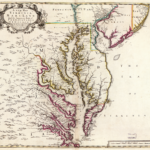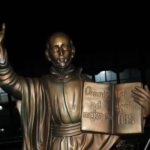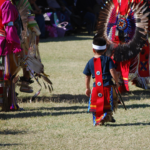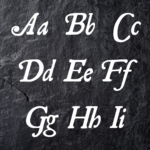 Recently, several people reading Sign of Nine Stripes commented in their reviews that it was surprising the Natives spoke English so well. I hadn’t gotten that comment before, and I realized as advanced readers of the third book, they hadn’t read the first one. So perhaps I need to add that to my author’s notes. But it got me thinking and revisiting my research.
Recently, several people reading Sign of Nine Stripes commented in their reviews that it was surprising the Natives spoke English so well. I hadn’t gotten that comment before, and I realized as advanced readers of the third book, they hadn’t read the first one. So perhaps I need to add that to my author’s notes. But it got me thinking and revisiting my research.
European countries brought their language, beliefs, and religions to the areas they occupied. Some were colonized by the Spanish, some by the French, and some by the English. The native people in each location would have been exposed to these invaders. Most of the Mid-Atlantic region was settled by people from England. As that is where my series takes place, I will focus on that area.
Charles Mason, in his journal, does not specify which tribe they hired as their guides. But it is widely accepted that they were members of the Iroquois federation. Researching this, I discovered the Susquehannock, who lived in the western portion of the colony at that time. Formerly a large tribe spreading along the Susquehanna River from Maryland into New York, their numbers had been decimated by disease, and the Iroquois conquered them. However, when the English arrived, they were one of the tribes that believed there was plenty for all, and they welcomed the incomers and traded with them. This may, as some historians believe, have been their downfall. When Mason and Dixon arrived, they occupied a much smaller area in Maryland and Pennsylvania along the river.
The Susquehannock would have learned the language in their dealings with the English settlers, especially when doing business with them. They would have encountered the influx of Jesuits into Catholic Maryland, which later spread into Pennsylvania. Itinerant monks made the rounds teaching and preaching, sometimes covering as much as 300 miles each week. The same situations occurred in Spanish and French territories; one can assume that the indigenous people there learned those languages.
But who were these invaders who taught them?
 The Jesuit order was founded by Ignatius de Loyola in 1534 and sanctioned by Pope Paul III in 1540. Members took vows of poverty and chastity in order to convert Muslims, and under the charismatic de Loyola, they expanded. By 1556, there were over 1,000 priests.
The Jesuit order was founded by Ignatius de Loyola in 1534 and sanctioned by Pope Paul III in 1540. Members took vows of poverty and chastity in order to convert Muslims, and under the charismatic de Loyola, they expanded. By 1556, there were over 1,000 priests.
With immigration to the colonies, the “Black-robes,” as the Natives called them, soon saw the opportunity to convert the tribes in the territories. While most often associated with their infiltration in Canada, by the French orders and Florida and the gulf coast, by the Spanish, it did not take long for the English orders to follow. And shortly afterward, they made their way across the Atlantic as well. Father Andrew White sailed up the Potomac and held the first Catholic Mass on 25 March 1634.
The largest Jesuit settlements were established in the Catholic Maryland colony, where the Order set up five estates totaling more than 12,000 acres. Each of these contained a home farm, fields for planting, and tenant farmers. The priests and brothers lived on the home farm, along with overseers and, surprisingly, African slaves. Comprising the whole of the Catholic faith in the colonies for many years, they paved the way for many Irish Catholics who fled persecution.
While their mission was to minister to those of the Catholic faith, they soon turned to converting the native heathens. White wrote in his journal that “who can have a doubt, but that by this one work so glorious, many thousands of souls may be led to Christ?” By learning their language, he overcame the hostility of several local tribes, even writing catechism for the Piscataway in their own tongue. By 1636, Thomas Copley obtained 24,500 acres establishing plantations for the Jesuit gentry, worked initially by indentured servants. After that term, with no replacements arriving, they turned to slavery for their workforce.
 The native tribes were diverse groups separated by cultural differences; they spoke different languages, lived in different environments, and practiced different spiritual beliefs. Some tribes were nomadic. Others, such as the Iroquois nation, developed sophisticated methods of governing and lived together in harmony. Unfortunately, the incoming Europeans did not recognize this. Many only thought of the profit they could make, while missionary groups counted the souls they saved by bringing the gospel to those who had never heard it.
The native tribes were diverse groups separated by cultural differences; they spoke different languages, lived in different environments, and practiced different spiritual beliefs. Some tribes were nomadic. Others, such as the Iroquois nation, developed sophisticated methods of governing and lived together in harmony. Unfortunately, the incoming Europeans did not recognize this. Many only thought of the profit they could make, while missionary groups counted the souls they saved by bringing the gospel to those who had never heard it.
Many saw this new land as an opportunity, not of a place already settled. From the native point of view, this was an invasion. They believed the land provided enough for everyone, and the concept of ownership was foreign to them. The land was sacred, and they were shocked to find it could be bought, sold, and fenced. Some tribes did work with the incomers, but many did not. And neither side understood the beliefs of what they considered ‘other.’
 In 1688-89, the Maryland Calverts found themselves unseated, and the penal laws which forced the Catholics to flee England were now enforced. Many Catholics fled to Pennsylvania, where religious freedom was still in effect. While some later returned to Maryland by the time of the French and Indian War, many were fully entrenched in Pennsylvania, including members of the Jesuit Order, who were known as men of learning and science, as well as religion. From their farms, these Jesuits rode out to spread the Word and educate the masses. Often these men rode over 300 miles a week, some visiting Europeans, others to the native peoples.
In 1688-89, the Maryland Calverts found themselves unseated, and the penal laws which forced the Catholics to flee England were now enforced. Many Catholics fled to Pennsylvania, where religious freedom was still in effect. While some later returned to Maryland by the time of the French and Indian War, many were fully entrenched in Pennsylvania, including members of the Jesuit Order, who were known as men of learning and science, as well as religion. From their farms, these Jesuits rode out to spread the Word and educate the masses. Often these men rode over 300 miles a week, some visiting Europeans, others to the native peoples.
While some tribes were known to accept this new religion, frequently, they merely incorporated it into their own beliefs. Some saw this God as a different face of their Great Spirit. But many were forced to learn the ways of the Europeans or be forced from their homelands. But that is a story for a different article. This was merely a look back at some of my research on whether tribal members spoke English. It seems many did.

Great article Carol. Very informative. Thanks.
Thank you! I’m glad you enjoyed it.